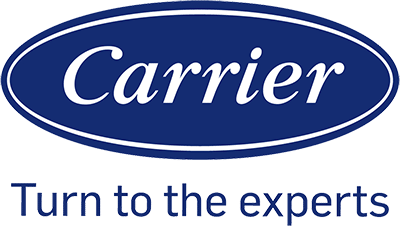Fundamentals of HVAC Thermostats

HVAC thermostats are devices that regulate the operation of heating, ventilation, and air conditioning (HVAC) systems to maintain a desired temperature within a space. They function as the control center for both heating and cooling systems, including furnaces, heat pumps, and air conditioners.
When we set a temperature on a thermostat, it senses the ambient temperature via a series of sensors such as metallic strips or thermistors. As the room temperature deviates from the set point, the thermostat activates either the heating or cooling devices to return the environment to the chosen temperature.
Thermostat Location is crucial for accurate temperature management. It should be placed on an interior wall, away from direct sunlight, drafts, doorways, and windows. This ensures it measures the room’s average temperature.
Modern thermostats can be digital, electromechanical, or a combination of both:
- Digital thermostats provide precise control over temperature settings and often include programmable options to schedule temperature changes throughout the day.
- Electromechanical thermostats often use bi-metallic strips that expand and contract with temperature changes, physically moving to activate heating or cooling.
For efficient operation, thermostats control not only the temperature but also the fans involved in the HVAC system. They can direct a furnace to begin producing heat, a heat pump to transfer heat into or out of the home, or an air conditioning unit to cool the interior space.
In summary, thermostats are integral to the proper function of HVAC systems, providing us with the ability to maintain a comfortable and controlled indoor climate.
Types of Thermostats and Features

When discussing HVAC systems, thermostats play a crucial role in maintaining comfort and managing energy consumption. We’ll specifically explore various types of thermostats and their features, focusing on the differences between programmable and non-programmable variants as well as the advanced functionalities of smart thermostats.
Programmable vs. Non-Programmable Thermostats
Programmable Thermostats allow us to set temperature schedules according to our daily and weekly routines. As a result, we can achieve energy efficiency by running the HVAC system less when we’re not home. These devices may include features like:
- Digital Displays: This feature provides an easy-to-read interface for setting and monitoring temperatures.
- Multiple Set Points: It enables us to schedule different temperatures for various times of the day or days of the week.
On the other hand, Non-Programmable Thermostats, often called manual thermostats, lack the ability to set schedules and typically require us to adjust them manually. Their simplicity is sometimes preferred for its straightforward operation. Key aspects include:
- Simplicity: Just set your desired temperature, and the thermostat maintains it consistently.
- Manual Operation: No schedules or programming, ideal for those who are at home often or prefer direct control.
Smart Thermostats and Connectivity Options
Smart Thermostats represent a significant advancement in thermostat technology, offering us remote access through our smartphones or other devices. They come with a variety of features such as:
- Wi-Fi Connectivity: We can control our HVAC system from anywhere using a Wi-Fi thermostat linked to a mobile application.
- Learning Capabilities: Certain models, like the ecobee smart thermostat, can learn our habits and adjust settings to increase comfort and reduce energy costs.
- Voice Control and Geofencing: We can use voice assistants to adjust settings or have our thermostat automatically change settings based on our location, adding a layer of convenience.
Smart thermostats provide us with detailed energy usage reports and may include sensors to monitor conditions in different rooms, ensuring even distribution of air throughout our home. These devices are an excellent choice for those who value advanced features that combine convenience with energy efficiency.
Installation and Compatibility Considerations
When we embark on the installation of HVAC thermostats, it is imperative that we assess compatibility with the existing equipment. Various types of air conditioners and HVAC systems require specific AC thermostats, so ensuring that the thermostat matches the system’s requirements is the first step.
Compatibility:
- HVAC System Type: Check whether the thermostat supports conventional (gas, oil, electric) systems, heat pumps, or dual-fuel systems.
- Staging: Determine if the thermostat must handle single-stage or multi-stage systems.
- Voltage: Identify whether the system operates on low voltage (24V, common in homes) or high voltage (120V/240V, less common).
Installation:
- Wiring: Confirm the number of wires available and their compatibility with the thermostat. Typical homes have 4-5 wire configurations. Be mindful that some smart thermostats require a common wire (C-wire).
- Placement: Install the thermostat away from direct sunlight, drafts, doorways, and windows to avoid false readings.
For professional installation, it is advantageous to consult with a qualified service technician. They can provide valuable input on:
- Equipment Suitability: Ensuring that the thermostat can effectively communicate and control all parts of the HVAC system.
- Correct Wiring: Addressing issues with inadequate wiring or the need for a C-wire installation.
- System Calibration: Setting up the thermostat for optimal performance and energy efficiency.
In summary, our careful consideration of compatibility and professional approach to installation will significantly influence the performance and efficiency of our HVAC thermostats.
Energy Efficiency and Temperature Control

Achieving energy efficiency in HVAC systems is closely tied to effective temperature control. By optimizing heating and cooling schedules and leveraging advancements in thermostat technology, we can significantly reduce energy consumption and costs, while maintaining comfort.
Optimizing Heating and Cooling Schedules
Programmability is essential for optimizing HVAC operation times. By setting our HVAC systems to adjust to different indoor temperature needs at specific times — such as lower temperatures during unoccupied hours — we reduce unnecessary energy consumption. Here are key strategies to implement:
- Setback Periods: Adjust the thermostat to economize heating and cooling when the building is empty.
- Gradual Changes: Implement slight temperature changes over time, which helps in avoiding the energy surge from sudden temperature shifts.
Advancements in Thermostat Technology
Technological enhancements in thermostats have allowed us to gain precise temperature control and energy-saving benefits, which contribute to lower energy bills:
- Smart Thermostats: These integrate with smart home systems for remote control, offering the ability to adjust settings from anywhere.
- Features:
- Line Voltage Thermostats: Provide direct control of electric heat, ensuring accuracy and efficiency.
- Humidity Controls: Manage ventilation alongside temperature for enhanced comfort management.
| Thermostat Feature | Benefit |
|---|---|
| Programmability | Reduced energy use through scheduling |
| Precise Temperature Control | Maintain desired comfort, limit fluctuations |
| Humidity Controls | Improved comfort and efficiency |
| Smart Home Integration | Convenience and remote adjustment |
Embracing these advancements leads to better energy consumption efficiency and more effective temperature regulation.
Maintenance and System Health
Proper maintenance of HVAC systems is crucial for ensuring efficiency and longevity. It not only preserves the health of the system but also ensures that you live in a comfortable and safe environment. Let’s break down the essentials:
1. Regular Check-ups:
We recommend scheduling regular maintenance for your HVAC units, typically twice a year. These check-ups prevent malfunctions and ensure your heating and cooling systems are ready for the upcoming season.
2. Replace Air Filters:
Replacing air filters is a simple yet vital step. We should perform this task every 1-3 months to maintain air quality and prevent strain on the system.
3. Thermostat Calibration:
Ensure that both mechanical and manual thermostats are correctly calibrated to reflect the current temperature. This guarantees that your desired temperature is met without overburdening the system.
4. System Upgrades:
Consider upgrading to a communicating thermostat or adding voice assistants to enhance usability and control over our home HVAC systems.
5. Inspect HVAC Appliances:
We inspect and maintain all HVAC appliances, including air conditioners, boilers, and even kitchen equipment like ovens and refrigerators. This ensures everything operates within the Energy Star guidelines for efficiency.
6. Circuit Inspection:
A review of the HVAC system’s electrical circuits is important. This helps avoid unexpected power issues that could damage the components.
Remember, investing in the maintenance of your HVAC system protects your budget in the long run by preventing costly repairs and reducing energy bills. Always consult with a certified service technician to ensure the best care for your system.




